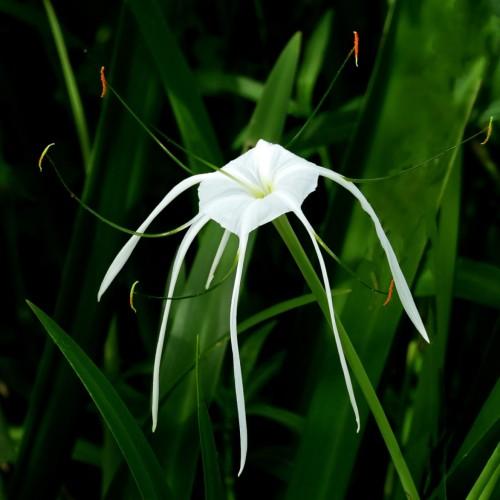
spider lily
Hymenocallis liriosme
Cycle:
Perennial
Watering:
Average
Hardiness Zone:
7 - 10
Flowers:
Flowers
Sun:
Full sun,part shade
Growth Rate:
Low
Maintenance:
Moderate
Salt Tolerant:
Yes
Care Level:
Medium
watering
Spider lilies should be kept consistently moist, but not wet. During active growth, water thoroughly and allow the soil to dry slightly between waterings. When the lilies are dormant, water less frequently. During the summer months, water 1-2 times a week and during the winter months, water every 2 weeks. If grown in containers, water more frequently.
sunlight
The spider lily (Hymenocallis liriosme) typically grows in temperate rainforest areas. The plant requires a significant amount of sunlight but should be shielded from direct, intense sunlight. In other words, it benefits from partial shade in the morning but can tolerate full sun if provided shade during the afternoon. Ideally, the spider lily needs around 4 to 6 hours of indirect sunlight daily to thrive. This plant has a dormancy period during winter, so limited light isn't an issue during that time of year.
pruning
Spider lily should be pruned 2-3 times a year. Pruning should be done lightly and only for maintenance purposes. Spring is the ideal time for pruning, as this will give the plant a chance to grow back and replenish its foliage over the summer months. Immediately after bloom, the flower stalks can be removed for a cleaner look. During the summer months, you can do light pruning to remove any dead or diseased leaves or flower stalks. Fall pruning can also be done to remove any fading foliage for a clean finish before entering winter. Pruning should be done sparingly to avoid stressing the plant.
